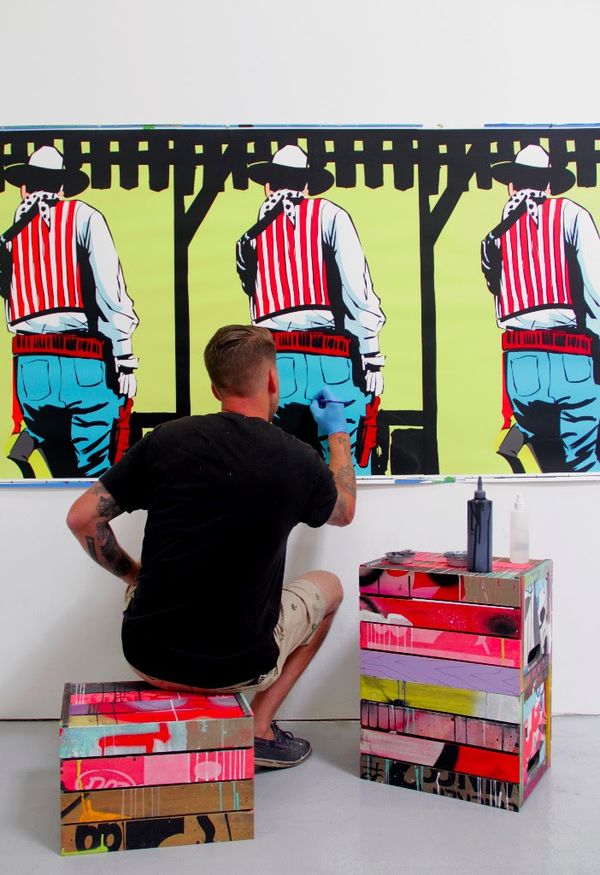
Press Release

Detroit-based contemporary art gallery Library Street Collective presents their first Los Angeles residency in Mid City (5428 W. Washington Blvd.) from September 2016 until early in the New Year. The lineup of exhibition programming is set to present some of the gallery's finest alongside a number of new artists, as they continue to push boundaries and expand upon their curatorial vision.
Inaugurating LSC's Los Angeles space on Saturday, September 17th is a solo exhibition of new works by Jordan Nickel (POSE)—aptly titled FRANKLY—a collection of evolutionary works that will recontextualize the provenance of the artist's Pop Art influences. Dramatic and immediate, his 16 paintings on paper demonstrate the risks and rewards of a body of work completely stripped down by one of LSC's favorite collagists.
Nickel began his training as an artist in Chicago in the early 90s, when as a teenager he gravitated towards the rebellion of sneaking out of his parents’ home to spend late nights painting in the streets. His determination to create on such a large scale kept him working tirelessly, and taught him tremendous patience; it wasn’t long before he realized that making art was all he ever wanted to do. Since then, Nickel’s message has evolved from tagging to a colorful fusion of 2-dimensional imagery that pulls from Pop Art, comics, advertising and typography, with a focus on revealing the intimate possibilities in traditionally superficial avenues of communication. Nickel layers and dissects his sources in a style all his own to present an aggregated story—a recipe where Betty and Veronica, Captain America and the Merrie Melodies are chopped and tossed to perfection.
Nickel’s new collection of works for FRANKLY offers a radical departure from what followers have come to expect from him, and the result is intriguing - mature, poised, and candid; undeniably, the product of an artist coming of age. On the surface, references that reveal his passion for the history of Pop Art are evident, while more obscure nods to Americana and cult classics (‘Western Picture Stories’, anyone?) are at the core of his visual progression. Formally, Nickel’s dissection and interference of the sources he subverts are increasingly subtle, making these techniques stronger than ever.
The cowboy has been a prevalent figure in Pop Art since its origins, and has come to signify the masculinity, independence and patriotism of America's romanticized golden age. Upon deeper investigation Nickel reveals his attachment to a text on C. Wright Mills (the Postmodern Cowboy), a midcentury sociologist who viewed the existence of the lone wolf as symbolic of depoliticization in America. It was in the mid 50s that Mills warned, "we are now in a situation in which many who are disengaged from prevailing allegiances have not acquired new ones, and so are distracted from and inattentive to political concerns of any kind. They are strangers to politics. They are not radical, not liberal, not conservative, not reactionary; they are inactionary; they are out of it". Within this body of work, Nickel challenges our notions of the cowboy as hero or renegade; chivalrous or lawless; patriotic or isolated, and in doing so reflects the contradictions inherent in democracy. What better time than now to pose such a question?
FRANKLY reads like a story that the artist has been dying to tell, and the decision to create the works on paper only aids in the desire to turn the pages. A large-scale painting, Sunshine and its Shadow, becomes sculpture when placed on crates for support and continues along Nickel’s penchant for 2D extension to the 3D realm. The exhibition’s final work, Untitled (Reaction #12), hangs from the wall and cascades to the floor where it sits, rolled at its end, suggesting hidden cells of narrative and the artist’s desire to scrutinize the possibilities of a new material. Frankly, what’s presented is a powerfully different point of view; because if you think you know Pose, think again.
Install Images


